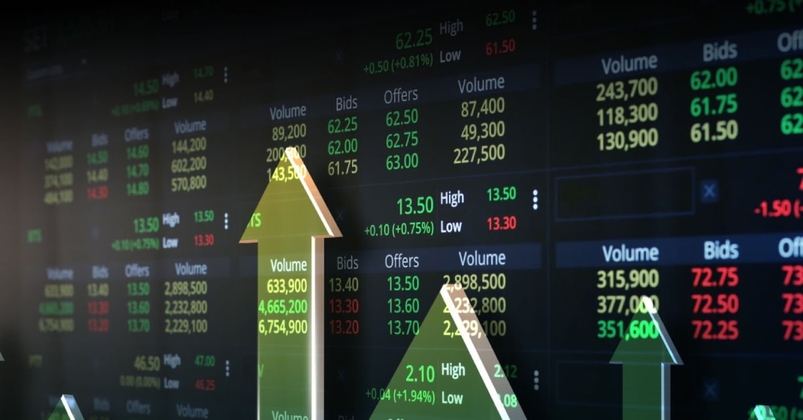- English
- 中文版
Why automated trading will play an ever increasing role in retail trading

The trend to trade Equity and Crypto has been heavily skewed towards momentum strategies and buying strength, selling weakness. While in margin FX markets, retail are predominantly mean reversion players. While their influence on the $6.6 trillion a day (turnover) margin FX markets is minimal, the opposite is true in equities and retail can aggressively influence single share CFDs when the flow is one way and targeted.
The next trend to be adopted by retail traders
Flow aside, we’ve all seen changing trends among retail traders, with behaviours evolving not just in the product mix, with Crypto and meme share CFDs getting incredible attention. But since March 2020 there's been a significant rise to trade less vanilla trading instruments and towards the use of optionality and derivatives, such as CFDs as vehicles to express a view. One thing is clear though, the financial literacy of the trading public has radically shifted and a broadening demographic are genuinely fascinated in trying to profit and grow wealth from the financial markets.
As we look forward, market participants are constantly evaluating what could be the next trend that will get the attention of retail traders. It could be an appetite for an emerging market thematic or towards a higher volatility sector, where expected returns are high. Or a trend towards a specific asset class, again, where the prospect of compelling returns contrasts to the perceived risk. Perhaps it will be technological advances that installs a belief that a trader has an increased edge.
Automated trading could play a far greater role in the future of retail trading
While this will be fascinating to watch, perhaps the real change we should be looking out for is changing trading behaviours – the systems and processes through which people trade, and the methods by which they enter and exit the market, as well as identifying and managing risk and emotion.
At Pepperstone, we’re seeing an evolution of our own among our global client base – that is, traders migrating towards automated or systematic strategies – where essentially traders are seeing the benefits of removing their own discretion in trading decisions and designing or downloading computer programs that enter and exit positions based on a set of pre-defined rules or conditions. These programs will be largely based on technical indicators, but they can be quant-based and range in the level of complexity.
This is a trend we believe is set to continue where the use of an algorithm or an automated process could play a major role in the future of retail trading. It will be a gradual process, rather than a sudden explosion in popularity like we’ve seen in Crypto, but our analysis suggests more and more traders will see the attractions of automating their trading.
For context, in July 2021, 39.07% of all client trades (across our full suite of products) were transacted by an automated system or an Expert Advisor. In July 2020 this percentage was at 30.3%. So if the trend continues, which we believe will be the case, we could see over half of our daily transactions placed using an automated strategy within 12-18 months.
Interestingly, the duration of hold times for positions executed through an automated system dropped 7% and 44% over the past 12 to 48 months respectively, to a median duration of 100 minutes per trade. This is interesting as margin FX, gold and equity index volatility, the core factor that determines one’s time in the market, was well below average in July. The reduction in hold times suggests clients trading systems are becoming ever more sophisticated.
The next wave
The 2021 UK Investment Trends report showed the most important factor (from respondents) that could further their trading education, was content on automated strategies – with 40% of respondents saying they wanted content on automating strategies, this outcome was some 3ppt above the next most requested factor. Our own client survey and with a sample size of 1883 clients, showed 34.4% of respondents intend to automate their trading decisions in the future.
So why are so many seeing the attractions and migrating towards systematic trading?
- Traders can create any strategy using a combination of technical, volatility and price-based indicators and backtest over a time (data set) to see if the system is profitable
- Backtesting is one of the best ways to understand your edge – while it makes big assumptions (that testing systems using on past data will work in the future), if the sample size is significant it can offer real insights into the efficacies and whether you hold a positive expectancy
- For traders using very low time frames (below 30 minutes) automating the process means far more accurate and less laborious trading
- Changes in volatility and range expansion can often result in an emotional decision, over trading or not taking trades you may otherwise have taken – automating removes emotion, which can improve trading performance. Emotion can.
Why not start your journey into automated trading – for many when you start exploring this world and community it will challenge the way you think about trading.
Take a look at Pepperstone’s Trading Simulator, Strategy Tester and Language Editor today and start your journey towards automated trading.
Ready to trade?
It's quick and easy to get started. Apply in minutes with our simple application process.
The material provided here has not been prepared in accordance with legal requirements designed to promote the independence of investment research and as such is considered to be a marketing communication. Whilst it is not subject to any prohibition on dealing ahead of the dissemination of investment research we will not seek to take any advantage before providing it to our clients.
Pepperstone doesn’t represent that the material provided here is accurate, current or complete, and therefore shouldn’t be relied upon as such. The information, whether from a third party or not, isn’t to be considered as a recommendation; or an offer to buy or sell; or the solicitation of an offer to buy or sell any security, financial product or instrument; or to participate in any particular trading strategy. It does not take into account readers’ financial situation or investment objectives. We advise any readers of this content to seek their own advice. Without the approval of Pepperstone, reproduction or redistribution of this information isn’t permitted.

